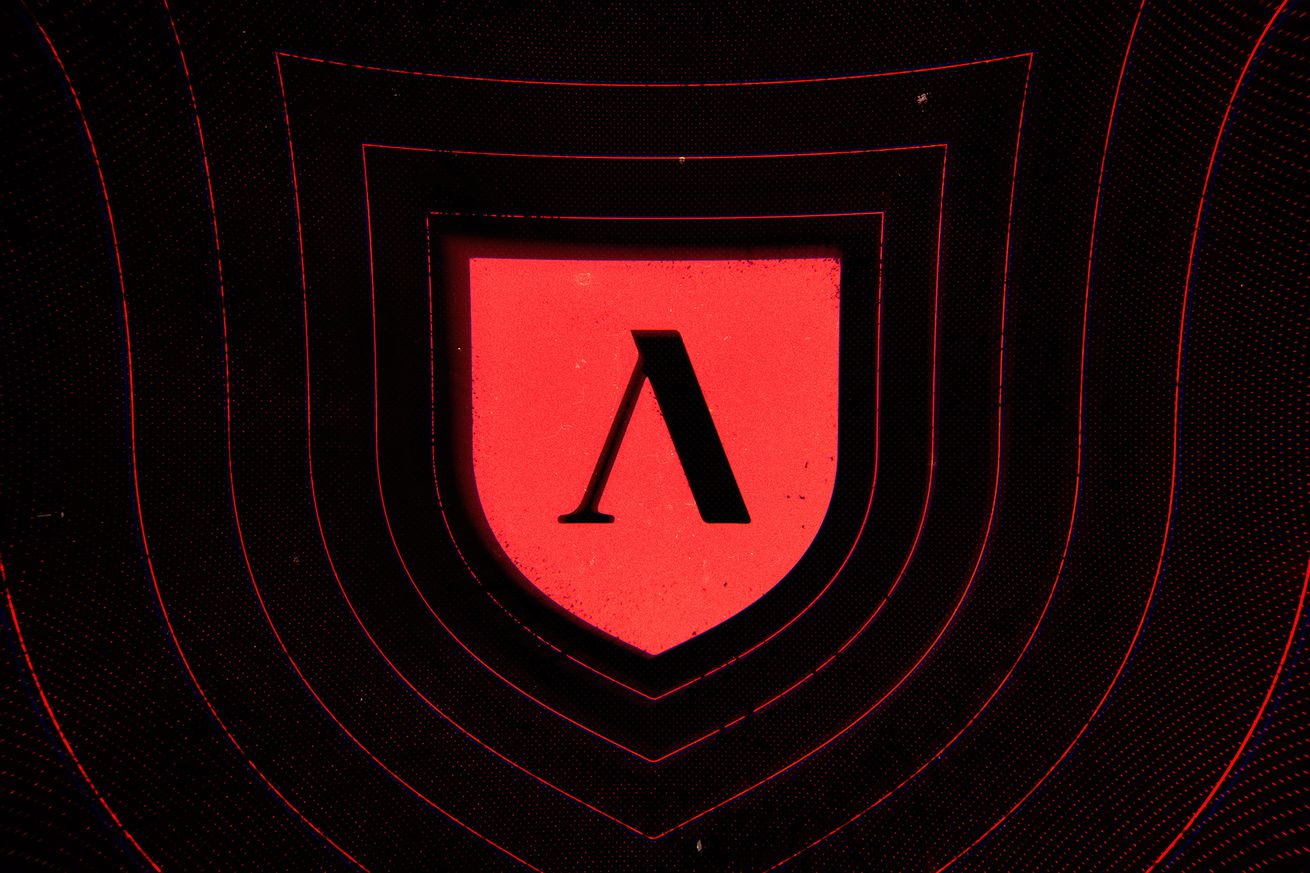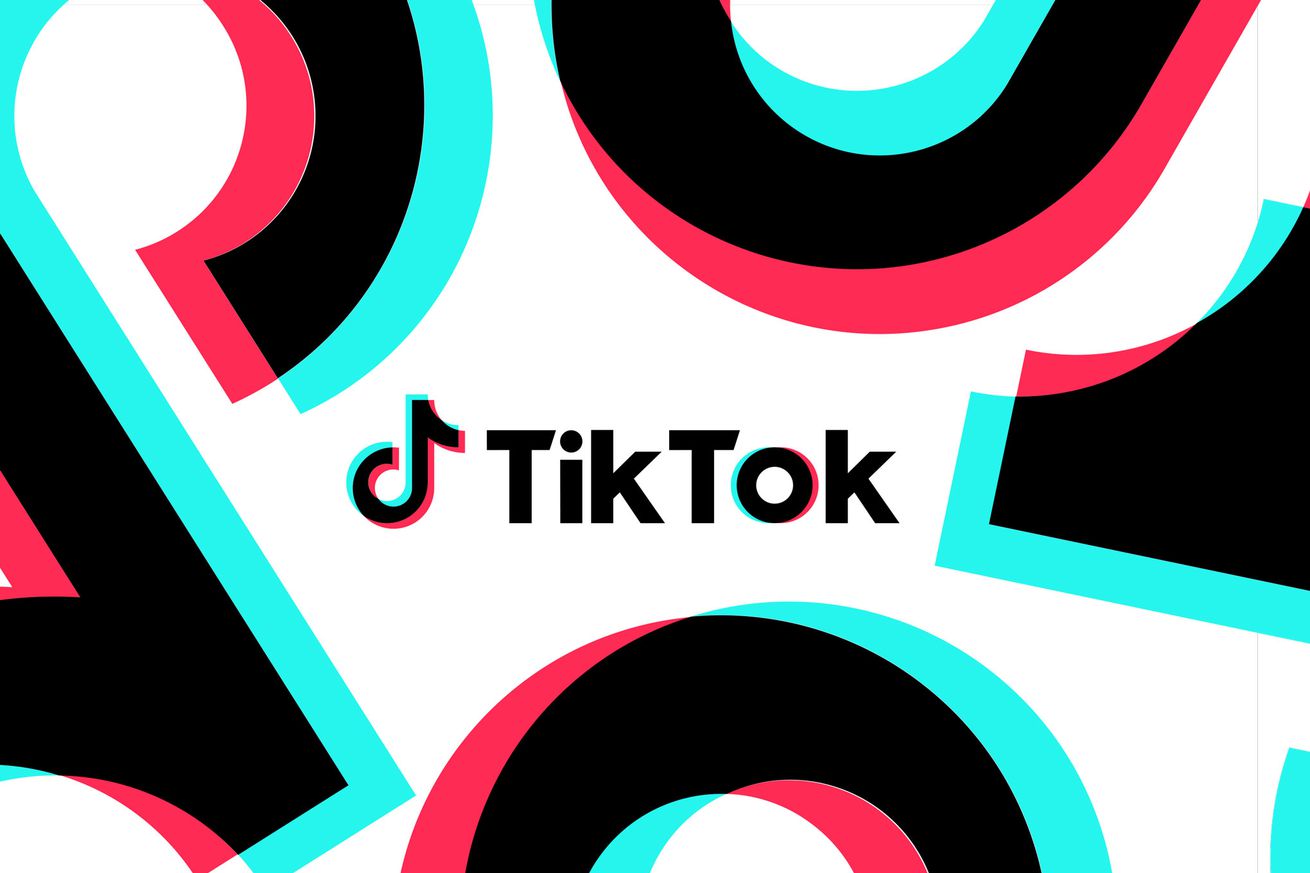
Hi, friends! Welcome to Installer No. 35, your guide to the best and Verge-iest stuff in the world. (If you’re new here, welcome, get ready to open some tabs, and also you can read all the old editions at the Installer homepage.)
This week, I’ve been rewatching Killing Eve now that it’s on Netflix, reading about Maggie Rogers and flying cars and the Today in Tabs newsletter, nodding along as MKBHD talks about gadget reviews, testing the Godspeed to-do list app, talking to everyone I know about the Papyrus 2 sketch, listening on repeat to The Tortured Poets Department, and playing with the Plaud AI voice recorder.
I also have for you a surprisingly gadget-y week! We have a new set of earbuds to try, a new handheld camera, an AI memory system, a new audio-first social network, and much more. (Oh, also, a programming note: Installer is off next week, back May 4th.) Let’s get into it.
(As always, the best part of Installer is your ideas and tips. What are you into this week? What should everyone else be playing / reading / watching / eating / doing? Tell me everything: installer@theverge.com. And if you know someone else who might enjoy Installer, forward it to them and tell them to subscribe here.)
The Drop
- Delta. This retro gaming emulator instantly earned a spot on my homescreen. Leaving aside the complicated legal questions about emulators and ROMs, this app is mature and polished and supports a huge number of old consoles. The iPhone screen also turns out to be the absolute perfect size for playing some of those old pixelated Mario games. Just saying. (This was, not surprisingly, the most recommended thing this week and maybe in the history of Installer — thanks to everyone who sent it in!)
- Airchat. I honestly don’t know how to feel about this app. Are voice-based social networks going to be a thing, or was Clubhouse just a strange pandemic-induced haze we were all in for a week? Lots of tech folks I know are into this one, though, so it’s at least worth keeping an eye on.
- Limitless. A very different kind of AI gadget, this one. The “we’ll summarize your meetings” approach is… fine, but I think the vision here, to figure out how to record and give you access to your life, is pretty cool. I also really dig the Limitless Pendant, which looks much less gadget-y than your average AI device.
- The Insta360 X4. Insta360 is doing some pretty nifty stuff in the action camera world. The $500 X4 does 8K footage at 30 frames per second, which goes a long way when you’re cropping and sharing videos later. It also has some ruggedness upgrades, which should help the more, uh, clumsy of us out there.
- Soulver 3 for iPhone. Soulver is the coolest, smartest calculator you’ve ever seen, and at long (like, weirdly long) last, the latest version is on the iPhone. $14 is a lot for an app like this, but this one’s worth it just for converting recipes and splitting bills.
- The Nothing Ear (a). Nothing’s earbuds have gotten pretty good, and I am extremely into the yellow accents and case on its new low-end models. (Which cost $99 and appear to be just about as good as the more expensive ones.) They don’t have a ton of extra platform-specific features, but as Bluetooth earbuds go, they’re a really good bet.
- Maestro for Amazon Music. I love this as a use for AI: just telling your music services the kind of stuff you want to listen to. Get weird with your mood, or just type, like, “I like The 1975 and Van Morrison, play other bands” and see what happens.
- Meta AI. Say this for Mark Zuckerberg and Co.: they are not going small with their AI plans. The new bot works across platforms (and on your smart glasses) and runs on the new Llama 3 model that Meta says rivals everything else on the market.
- PodcastAP. A podcast app for the fediverse that can add new episodes to your timeline anywhere you are. It’s pretty basic right now, and Mastodon et al. need to work on being better podcast players, but this is a super cool idea.
- The Circle season 6. This is one of Netflix’s more unhinged reality shows, which is saying something! And this season, there’s a twist: one of the characters is actually an AI bot named “Max.” It’s going to get so weird.
Group project
In last week’s Installer, I asked you all to share what you use AI for. Thanks to everyone who emailed, texted, Threads-ed, and Mastodon-ed me with your thoughts!
The main thing I heard, over and over and over again, is that you don’t use AI. A lot of you said you actively avoid it, wish your favorite apps would stop integrating it, and don’t really see much use for it at all. I get that; that’s how I feel about a lot of AI. There are so many neat-sounding things out there that turn out to kind of suck and mostly be a hassle that, at some point, you just kind of give up.
But! I did get a bunch of cool recommendations of apps and tools y’all like, so let me share a few I heard about:
- Chatbots. I mean, duh. ChatGPT seems to be the overwhelming favorite, but I heard some love for Claude, too, and even a little Gemini hype. No love for Meta AI just yet, but that might change. Oh, and some definite votes for Poe as a way to use all the bots in one place.
- Perplexity. This one’s half chatbot, half search engine, and it’s probably the most popular thing I heard about this week. As a speedy way to get real-time answers to questions, it’s pretty great.
- Arc. A bunch of you like Arc’s “browse for me” feature, which summarizes and curates websites for you. Lucky you, I think that feature is about to be in basically every browser everywhere.
- Spacebar. An app that turns your IRL conversations into “memos,” with recaps and info about everything you talked about. Would it be weird to pull this out at dinner with friends? Maybe! But I heard some good things, and I’m intrigued.
More broadly, there were a few use cases I heard a bunch of times, not necessarily tool-specific but instead just something useful you can do with AI:
- Summarize stuff. This appears to be your go-to use case for AI, and it’s definitely mine, too. What was the gist of that long article you read and already kind of forgot? What’s this true crime doc about?
- Planning things. My other favorite use case: just ask the bot what people like to do wherever you’re going and start your itinerary from there. I loved the email I got from Jeff, who used ChatGPT to summarize a bunch of people’s ideas about where to go in Europe and got a travel itinerary out of it.
- Test your knowledge. This is sort of related to the last one, but I heard from a few folks who said they’ll upload a doc to ChatGPT or Gemini and then have the bot quiz them on its contents. A fun study tool!
- Check your writing. Lots and lots of grammar checkers out there, it seems. I heard from folks using AI tools to gut check ideas, check for errors, and just make sure all the sentences make sense.
- Make your own art. Whether you’re making playlists, decorating Notion pages, or sketching character ideas for your novel, I heard from folks who love having an endless fountain of new art at their disposal.
The overarching theme of your responses was that AI is useful… as a starting point. It’s a good tool to go from “I have to do a thing” to “I have now done a first, not very good, version of a thing.” Which is progress! If you’d rather edit an email than write one or tweak your presentation rather than build it from scratch, AI can be a help. But do not trust it to finish the job. You’ll end up submitting Shrimp Jesus in the quarterly report, and nobody needs that.
I’ve been working on some stuff about other good AI tools, too, so stay tuned — and keep sending recommendations!
Screen share
One of my favorite things about Parker Ortolani, a product manager for consumer products here at Vox Media, is that he usually has better ideas about Apple products than Apple does. (Except for his deeply confusing love for the Vision Pro, but we’ll let that one go.) He’s always doing concept art for Apple apps, fixing dumb things about iOS, and even thinks Siri might someday be great. I love this for him.
Anyway, I asked Parker to share his homescreen with us because I figure Parker’s the kind of guy who might spend way too much time thinking about the layout and organization of everything. And I figured he’d have a bunch of custom icons and stuff no one even knew existed. I was right!
Here’s Parker’s homescreen, plus some info on the apps he uses and why:
/cdn.vox-cdn.com/uploads/chorus_asset/file/25410348/IMG_2984.png)
The phone: I’m currently using an iPhone 15 Pro in natural titanium. It’s easily my favorite iPhone since the X. Though I barely use the Action Button, the much lighter frame and USB-C have been game-changers.
The wallpaper: On the homescreen, I am using a dark knit background shared by the folks over at Impending who make the excellent Clear to-do list app, which is also my task manager of choice. I like a dark background generally, but using the pure black can get boring, so it’s nice to add a little texture. iOS just feels smoother with a black wallpaper.
The apps: Messages, Photos, YouTube, Instagram, Fantastical, Soulver, Slack, Transit, Maps, Copilot, Perplexity, Delta, Bulletin, Clear, Overcast, Arc, X, Threads, Apple Music.
I primarily use X to keep up with news, startups, the hot AI companies, and folks just building cool things, while Threads has become the best app for keeping up with entertainment and interacting with writers and journalists. Instagram is floating around there, too, but that’s more for just keeping up with friends and mindlessly scrolling through adorable dog videos.
Living in New York, knowing the current subway times is a must. I’ve tried all of the New York subway apps, even the new official MTA one that’s surprisingly good, but ultimately, nothing comes close to Transit. It has far and away the best user interface, updates fast, and always has what I want right at the surface. A great bonus is that it has an excellent Apple Watch app as well.
Fantastical has been one of my favorite apps for years. It’s just one of those tools you’ll have to pry from my cold, dead hands. The ticker and list UI is the absolute best calendar experience out there. And there are native counterparts on every Apple platform (sans tvOS, for obvious reasons).
There’s lots of AI stuff here, too. While folks tend to laud Arc Search’s AI-generated webpages that can replace traditional search (which are indeed awesome), I personally just love the care that’s gone into the user interface. I supplement Arc Search with Perplexity, which I tend to use as my go-to for complex deep searches. I find that it’s best at that. Bulletin is a relatively new RSS reader with powerful AI features and a gorgeous design — the progressive blurs just make me swoon.
Apple Weather and Apple Maps have gotten really good over the past few years, so I feel less compelled to use third-party alternatives these days. I like Apple Weather so much that I’ve given it a giant widget slot at the top for the hourly forecast. (I have a love / hate relationship with widgets on iOS: they take up a lot of space, and I often find more value in having a bunch of app icons.) I’ve tried Spotify a bunch of times but always come back to Apple Music.
I like my podcasts to be separated from music, though. And while I’ve been playing around with the new Apple Podcasts transcripts feature, I’ve come back to Overcast. I listen to so many shows that a dense, truly customizable interface is a must-have for me.
I also asked Parker to share a few things he’s into right now. Here’s what he shared:
- If you’re into LLMs, you’re probably aware of Hugging Face. The team recently released their first native mobile app, HuggingChat, that lets you use the open-source models that they host like Llama 3 and Gemma. The app is really nicely designed and a good change of pace from ChatGPT or Poe. In fact, it has no message limit. It’s quite powerful and lets you easily swap models on the fly. You can even build your own bots. It also shares the great haptic feedback that the ChatGPT app introduced.
- I love smartwatches, but I have a personal affinity for traditional watches. Recently, I got lucky and landed a white Snoopy edition MoonSwatch. Not only is it the first all-white bioceramic version but it also has an adorable little Snoopy complication. It’s a delightful reprieve from constant bits and boops.
- I stopped using the official Apple MagSafe wallet because it just doesn’t provide a whole lot of value. But I picked up the Satechi Magnetic Wallet that has a built-in stand, and it’s awesome. It has an additional slot for more cards than the Apple one.
Crowdsourced
Here’s what the Installer community is into this week. I want to know what you’re into right now as well! Email installer@theverge.com or message +1 203-570-8663 with your recommendations for anything and everything, and we’ll feature some of our favorites here every week. Also, for even more recommendations than I could fit here, check out this Threads… thread.
“I’ve been watching Delicious in Dungeon on Netflix, and I’m super loving it! Also been playing Helldivers 2 and the new Destiny 2 stuff and poking at a bunch of iPhone 15 reviews to see if I should get that over a 13 now that my 2020 SE has a basically defunct battery and I’ve never actually had a ‘flagship’ device.” – Tyler
“I’ve been really enjoying the new podcast from Seth Meyers and The Lonely Island. As well as being deeply silly, it’s a fascinating look behind the scenes of SNL at what went into making the legendary SNL Digital Shorts. It’s inventively called The Lonely Island and Seth Meyers Podcast.” – Jonathan
“I recommend that you check out Lunch Money. I’ve been using this solopreneur-built app to organize my finances for the past couple of years. It’s been wonderful to use and has taught me financial discipline. It’s one of the few subscriptions that I’m happy to pay for.” – Akshobhya
“Recently played around with augmented reality to put together a mixed-space painting session. It was really fun. Footage here for anyone curious about it.” – K
“On the recommendation of my fav gaming podcast, The Besties, I’ve been playing Slice & Dice for iOS — it’s an RPG battler where all attacks, both yours and your enemies’, are determined by actual dice rolling around a virtual dice tray, and instead of leveling up to get better weapons, you get better dice. Really neat idea done well, great couch companion.” – Nick
“I wanted to share the app CropSize for iOS. I find myself taking multiple screenshots on social media (usually memes) and find it super cumbersome to have to crop every tweet or Instagram post so my friends don’t see the entirety of my feed. CropSize lets you batch-process images super easily and quickly. It is unfortunately $2.99, but tbh I’m just glad it’s not a subscription service. Time saver!” – Keyser
“Just finished the latest video from MKBHD’s “The Studio,” where Mariah [Zenk] talks about the future of food automation tech.” – Josh
“I changed podcast providers to AntennaPod from Pocket Casts, just got sick of the upselling and paywalls in the app. Weird to think I’d rather have an app that was less feature-rich than one that offered the extras for a subscription fee. Also it’s a very good app and I’m happy I made the change.” – Benjamin
“The Fallout show got me hooked to head back into the Wasteland again... Gone back to my favorite, Fallout 3.” – Max
“Reading Mistborn by Brandon Sanderson, setting up my first NAS, and hoping that the weather cooperates for me to go play Disc Golf this weekend.” – Dylan
Signing off
My house is full of Ikea furniture. Shelves, beds, tables, chairs, you name it, it’s mostly Ikea. (It was a big moment in my adult life when we graduated from “the cheap Ikea stuff” to “the fancy Ikea stuff,” and if you shop at Ikea, you know what I mean.) So, of course, I’m already looking around my basement office to see where I can fit stuff from the new Brännboll collection of rolling loungers, toy shelves, and deeply weird donut chairs that can’t possibly be comfortable. I don’t know why most of this qualifies as “gaming” furniture, but I do know I need that rolling pegboard cart thing as soon as possible. Forget the bar cart. I’m ready for a VR cart.
See you next week!

/cdn.vox-cdn.com/uploads/chorus_asset/file/25382178/247083_Crossrope_AMP_Jump_Rop_SVasani_0003.jpg) Photo by Sheena Vasani / The Verge
Photo by Sheena Vasani / The Verge
/cdn.vox-cdn.com/uploads/chorus_asset/file/25382180/247083_Crossrope_AMP_Jump_Rop_SVasani_0005.jpg) Photo by Sheena Vasani / The Verge
Photo by Sheena Vasani / The Verge
/cdn.vox-cdn.com/uploads/chorus_asset/file/25407691/crossropeworkout.jpg)
/cdn.vox-cdn.com/uploads/chorus_asset/file/25407707/spotifycrossrope.jpg)
/cdn.vox-cdn.com/uploads/chorus_asset/file/25407689/3davatarweirdd.jpeg)
/cdn.vox-cdn.com/uploads/chorus_asset/file/25382179/247083_Crossrope_AMP_Jump_Rop_SVasani_0004.jpg) Photo by Sheena Vasani / The Verge
Photo by Sheena Vasani / The Verge
/cdn.vox-cdn.com/uploads/chorus_asset/file/25382176/247083_Crossrope_AMP_Jump_Rop_SVasani_0001.jpg) Photo by Sheena Vasani / The Verge
Photo by Sheena Vasani / The Verge

/cdn.vox-cdn.com/uploads/chorus_asset/file/25408544/01_spotify.jpg)
/cdn.vox-cdn.com/uploads/chorus_asset/file/25408545/02_apple.jpg)
/cdn.vox-cdn.com/uploads/chorus_asset/file/25408546/03_amazon.jpg)
/cdn.vox-cdn.com/uploads/chorus_asset/file/25408547/04_youtube.jpg)



/cdn.vox-cdn.com/uploads/chorus_asset/file/25407903/Screen_Shot_2024_04_18_at_5.24.45_PM.png) Razer
Razer





/cdn.vox-cdn.com/uploads/chorus_asset/file/25403672/Logi_AI_Prompt_Builder_screenshot.png) Screenshot: Emilia David/The Verge
Screenshot: Emilia David/The Verge
/cdn.vox-cdn.com/uploads/chorus_asset/file/25403679/Choose_Recipe.gif) Logitech
Logitech

/cdn.vox-cdn.com/uploads/chorus_asset/file/25381147/IMG_3731.jpg)
/cdn.vox-cdn.com/uploads/chorus_asset/file/25381141/soundcore_app.jpg)

/cdn.vox-cdn.com/uploads/chorus_asset/file/25399243/NASA_ISS_space_junk.jpg) Image:
Image: 
/cdn.vox-cdn.com/uploads/chorus_asset/file/25391564/turbo_tax_upsell.png) Image: Elizabeth Warren
Image: Elizabeth Warren


/cdn.vox-cdn.com/uploads/chorus_asset/file/25394659/Br_nnboll_armchair.jpg) Image: Ikea
Image: Ikea
/cdn.vox-cdn.com/uploads/chorus_asset/file/25394660/Br_nnboll_armchair_1.jpg) Image: Ikea
Image: Ikea
/cdn.vox-cdn.com/uploads/chorus_asset/file/25394661/Br_nnboll_inflatable_2.jpg) Image: Ikea
Image: Ikea
/cdn.vox-cdn.com/uploads/chorus_asset/file/25394662/Br_nnboll_swing_chair.jpg) Image: Ikea
Image: Ikea
/cdn.vox-cdn.com/uploads/chorus_asset/file/25394663/Br_nnboll_desk.jpg) Image: Ikea
Image: Ikea
/cdn.vox-cdn.com/uploads/chorus_asset/file/25394665/Br_nnboll_storage.jpg) Image: Ikea
Image: Ikea
/cdn.vox-cdn.com/uploads/chorus_asset/file/25394666/Br_nnboll_shelves.jpg) Image: Ikea
Image: Ikea
/cdn.vox-cdn.com/uploads/chorus_asset/file/25394667/Br_nnboll_throw.jpg) Image: Ikea
Image: Ikea
/cdn.vox-cdn.com/uploads/chorus_asset/file/25394677/pj24_pcaa_bra_productfeatures_brannboll_easychair_10s_3x4_Web_loop.mp4_ezgif.com_optimize.gif) Image: Ikea
Image: Ikea
